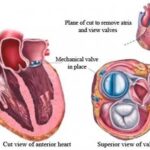Polymyositis is a fairly uncommon type of inflammatory disease which leads to very significant muscle weakness. Patients having this condition have muscle weakness that progresses; it usually starts in the trunk of the body. Numerous treatment approaches may be used for managing polymyositis; for some patients the condition is likely to go into remission when treated early. If a patient is treated early, his or her muscles would not be permanently damaged, so when treated early a person has a better shot at full recovery.
Possible causes of polymyositis
The condition is known to be a skeletal muscle disease; polymyositis has another medical name which is called idiopathic inflammatory myopathy. The cause is not entirely understood. It is believed that a viral infection or autoimmune reaction attacking the skeletal muscles can cause this disease. Polymyositis can occur in anyone of any age, although most people who have the disease develop it between the ages of 50 and 70. In children, the disease is likely to occur between the ages of 5 and 15. The incidence of polymyositis is seen more frequently in women; in fact the disease strikes twice as many women than men. Polymyositis is more frequent in African Americans than Caucasians. On the whole, 1 out of every 100,000 people suffers from some degree of inflammatory myopathy each year.
Symptoms of polymyositis
The symptoms of polymyositis can affect the entire body.
The symptoms include:
Anorexia
Difficulty in swallowing
Fatigue
Fever
Joint pain
Morning stiffness
Muscle pain
Muscle weakness in muscles like hips, shoulders etc
Shortness of breath
Weight loss
Diagnosis of polymyositis
The doctor will form a diagnosis of polymyositis after a series of tests. The tests used in the diagnosis of polymyositis include:
Elevated CPK(Elevated Creatine Kinase) – When muscles are damaged they release an enzyme called CPK. This enzyme is released into the blood and can be measured with a blood test. If the muscles are damaged the CPK enzyme in the blood will be elevated.
Elevated Serum Aldolase – This is an enzyme that is most concentrated in skeletal muscles. When serum aldolase is elevated in the blood stream, this is indicative of myopathy of the striated (striated muscles are skeletal muscles used for movement) muscles.
Electromyography – This test is a diagnostic procedure that measures the activity of the motor neurons. An electromyography also determines the ability for the skeletal muscles to respond to electrical stimulation, which relates to muscle health.
MRI – An MRI will give an accurate picture of the condition of the muscles.
Muscle biopsy – A muscle biopsy is done under local anesthesia. A needle is inserted into the muscle; the doctor aspirates a tiny piece of muscle into the needle. The sample is taken to a pathology lab for examination. Another way this test may be done is by an open biopsy; this is done by making a small incision down to the skeletal muscles and a small sample is cut away for examination.
Treatment for polymyositis
Corticosteroid medications are a viable treatment for polymyositis. When improvement in muscle strength is accomplished (usually in 4 to 6 weeks), the medication is gradually decreased. Maintenance therapy with prednisone can be sustained for an indefinite period of time. People who don’t respond well to corticosteroids, medications to control immune response can be used. If polymyositis is connected with a tumor, the muscles can improve if the tumor is removed.
Conclusion
Muscle weakness, due to polymyositis, can develop unexpectedly or take place slowly in a matter of weeks or months. The weakness is due to inflammation and the breakdown of muscle fibers. Patients having this disease can have trouble raising their arms over their head, or climbing stairs. They may also have difficulty rising from a sitting position. Another manifestation of polymyositis is that the voice can be affected due to the breakdown of muscle tissue in the throat.
Polymyositis occurs when the white blood cells attack one’s muscle tissue; it is categorized as an autoimmune disease. The causes of polymyositis aren’t totally understood. In a few cases, the disorder emerges from a genetic module, and it may also be associated some transferable diseases. Yet, in some cases, polymyositis occurs with no known cause. A doctor will usually try to determine the cause of the condition to make sure that the most suitable treatment is rendered to the patient in order to treat the causative factor, if it is known.
Sources:
Medline Plus
Wise Geek



